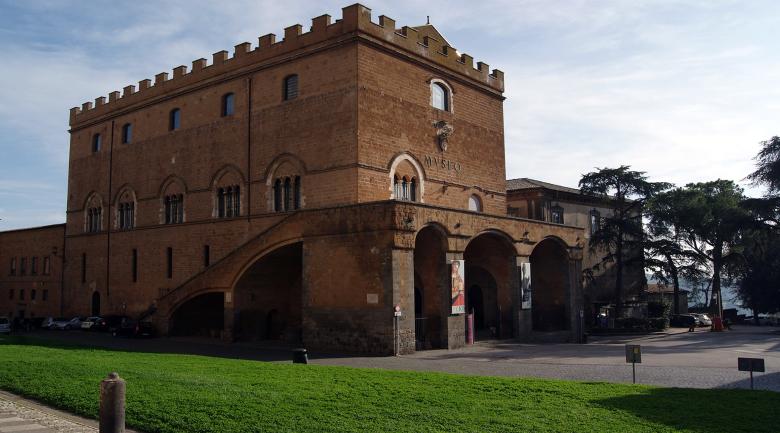It has a square layout and is preceded by a walkway of about 16 metres in length, with a gentle slope towards the entrance of the tomb, which is entered into through a double door. The walls of the small entrance hall were plastered and a snake was painted onto both of them, a common funerary emblem. You can still see a few traces of colour to this day. The gabled ceiling reproduces the linear system of the half-timbered roof using fake beams obtained from the tufa rock. There are benches along the walls, on which there are two sarcophaguses made of peperino stone made to look like wooden boxes, the lid of an urn and an urn with its lid. The urn with lid bares the inscription:
vel hescnas composed of the Etruscan, male given name
vel and the family name
hescnas (Hescanas), the owners of the tomb, which is repeated in the inscriptions painted on the wall that, today, have almost completely disappeared.
A mural, consisting of a wave pattern at its base, covered all the walls, but large areas of plaster have fallen resulting in loss of the pictorial decoration. To the right of the entrance, the deceased is represented on a red chariot horse as he heads to beyond the grave; but perhaps the most representative figure of the tomb is one dressed in yellow, with red, flame motif edges, and is facing the left hand side, lifting his robe slightly and heading towards two young people embracing: next to one of these young people there was a painted epigraph that displayed the word zil (zilath), which indicated an important Etruscan magistrate, corresponding to the Latin praetor. A procession of three characters preceded the deceased to his entry into the underworld. Other characters and scenes of purification were on the back wall, but today they can hardly be made out. The left side was occupied by a painted representation that is commonly seen in Etruscan tombs: that of the banquet, which finished at the left side of the entrance, where the table was depicted along with drinking vessels for the banquet. The Hescanas tomb has been dated back to the late fourth century, although some materials found inside provide evidence of usage in later periods.
Curiosity
The Hescanas tomb, together with the various cemeteries and graves scattered around Orvieto, reflects the will of the new, aristocratic social class, which, from the early fourth century, began to opt for the countryside instead of the city, and preferred areas that were further away from the urban centres as burial places. It is no coincidence that, following this, the large urban necropolises of Cannicella and Crocefisso del Tufo, circumventing Orvieto on its tufa rock, were no longer frequented by the most eminent families.




























